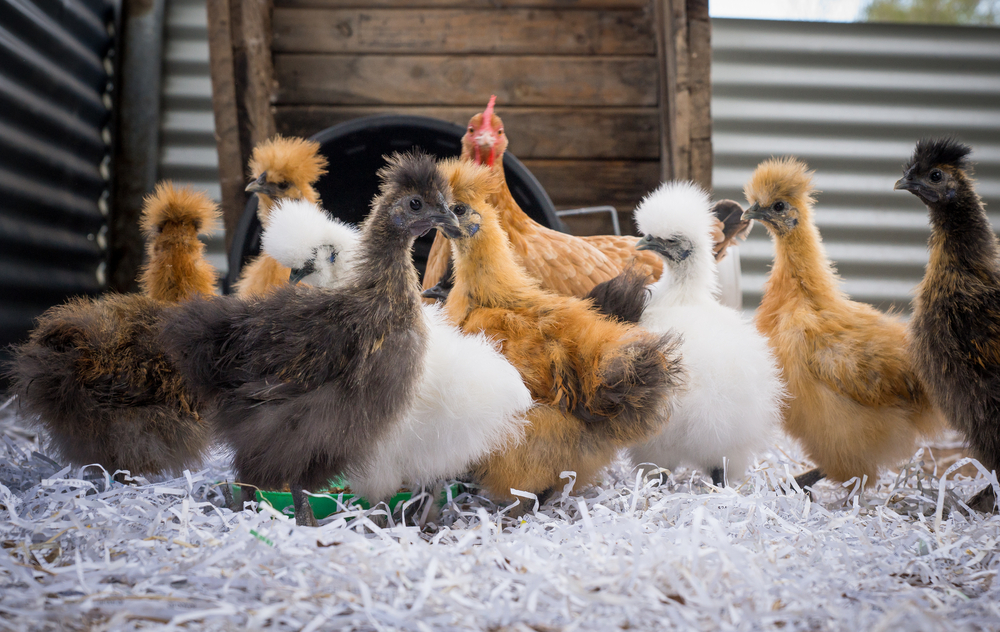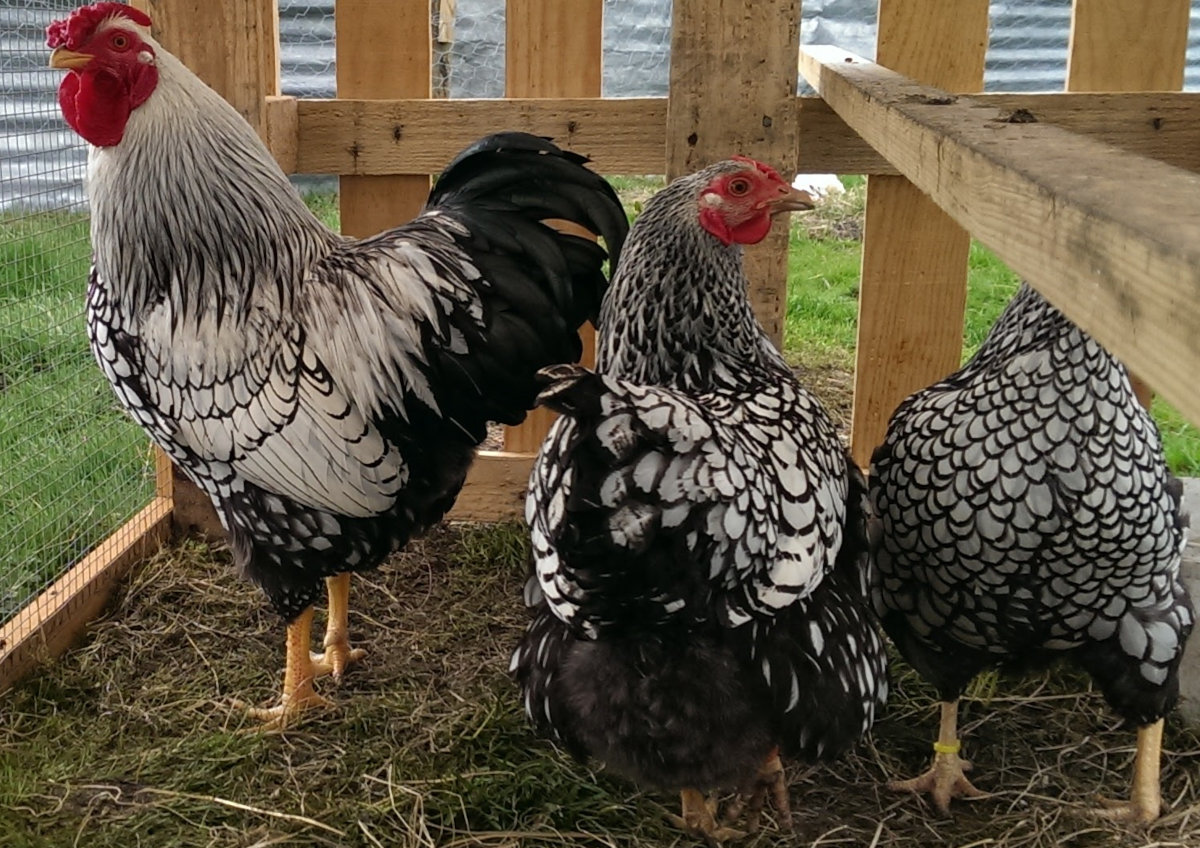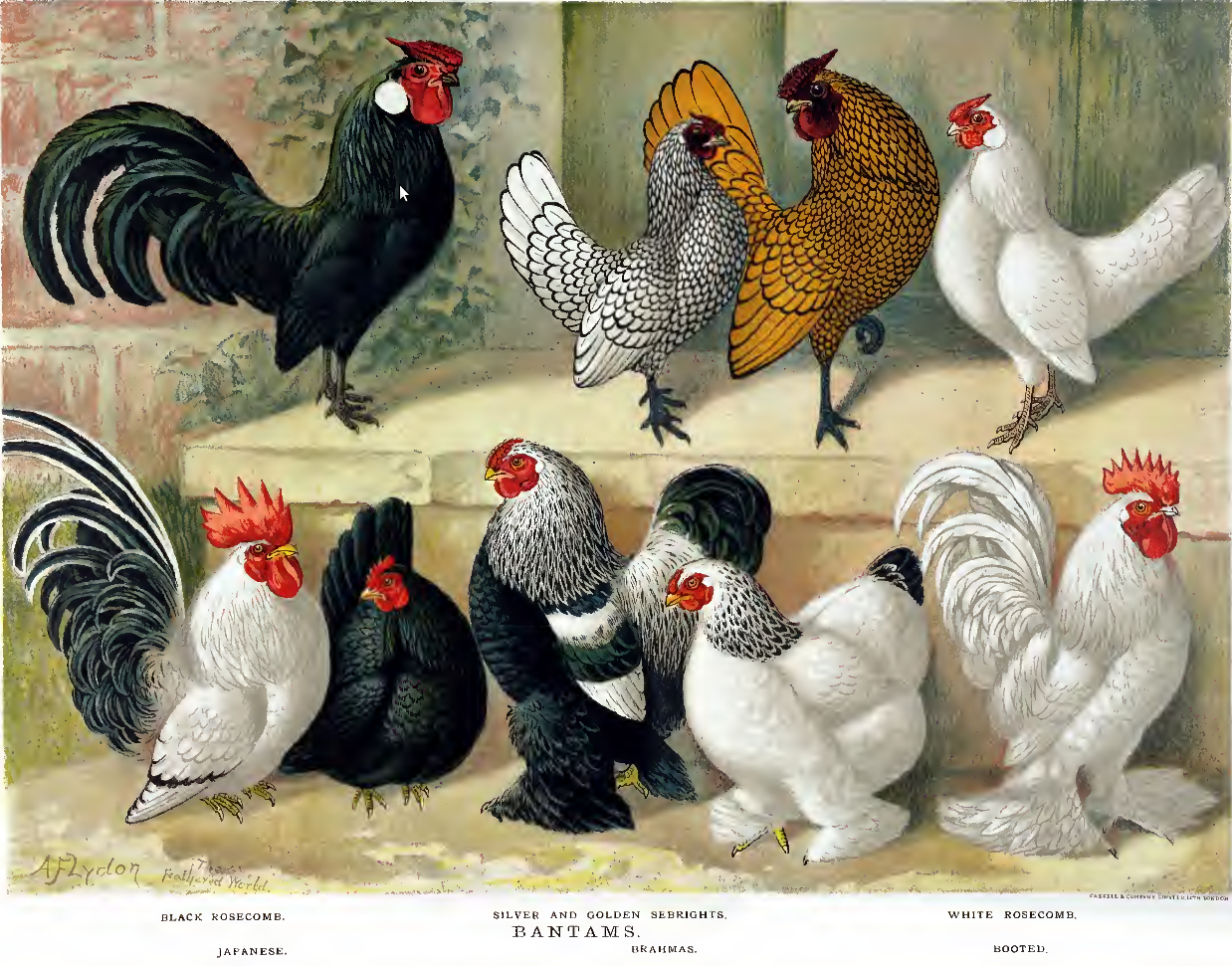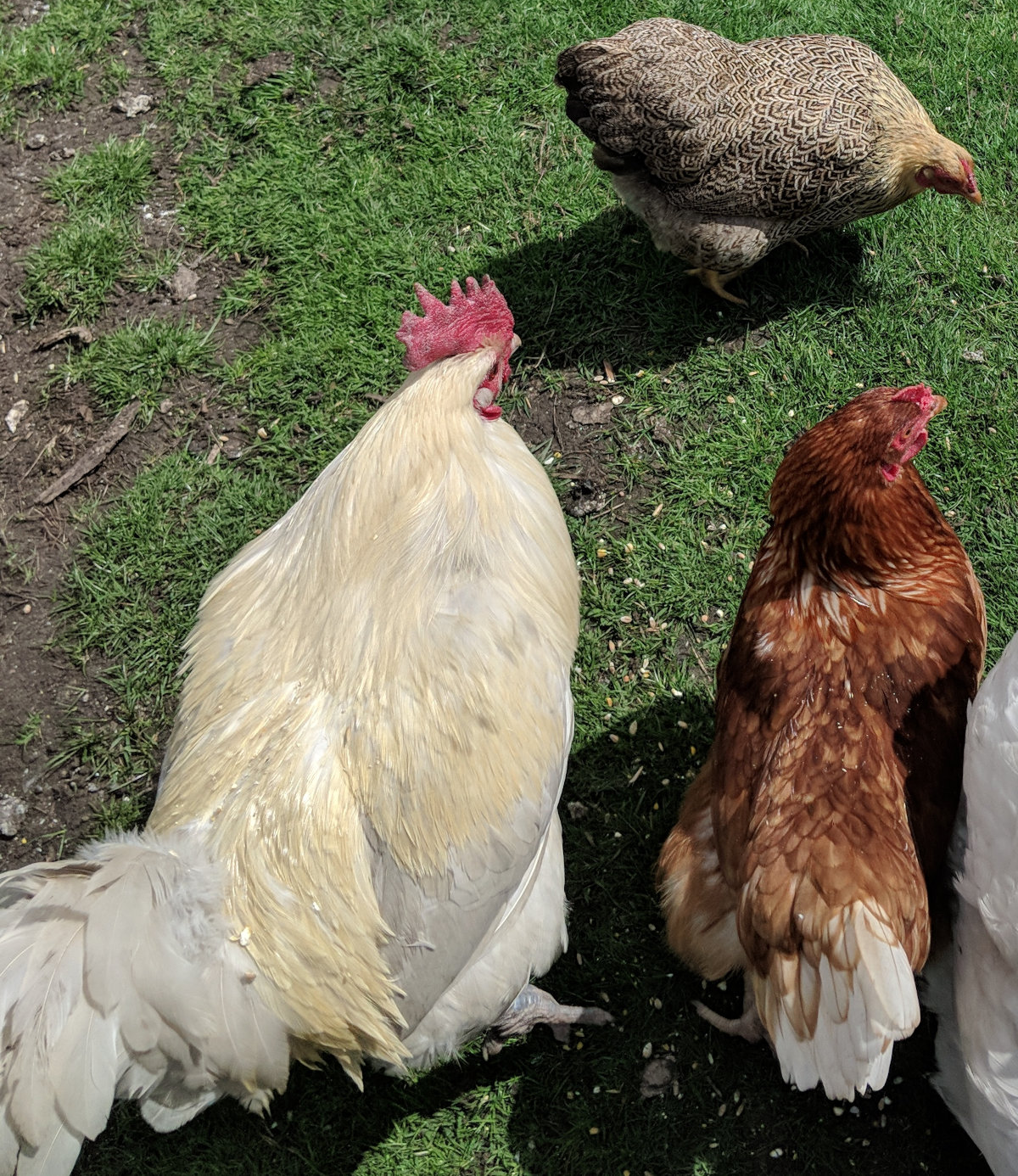Should I get large fowl chickens or bantams

There are also some disadvantages to owning bantams. For example, they may not be as productive as large fowl, and they may be more susceptible to predators.
Table of Contents
However, for many people, the advantages of owning bantams outweigh the disadvantages.
Should I get bantam chickens or large fowl?
I have Large fowl and bantams chickens as well as true bantams and both sizes of chicken have their advantages, large fowl tend to be more productive but take up more room and eat more feed.
Bantams chickens on the other hand tend to need less space, eat less but are not as productive as eggs layers.
Below: Wyandottes and light Sussex bantams are excellent layers.

There are many reasons why you might choose bantams instead of large fowl. Here are a few of the most common reasons:
- Space: Bantams are smaller than large fowl, so they require less space. This makes them a good choice for people with small backyards or urban areas.
- Cost: Bantams are often less expensive than large fowl. This is because they require less feed and space, and they are not as popular as large fowl.
- Handling: Bantams are easier to handle than large fowl. This is because they are smaller and less flighty.
- Personality: Bantams are often said to have more personality than large fowl. They are often described as being more curious, playful, and affectionate.
- Eggs: Bantams lay eggs that are just as nutritious as eggs from large fowl. However, bantam eggs are typically smaller than eggs from large fowl.
The choice is one of personal preference unless you are constrained by space or need productive hybrids.
What is the difference between a large fowl chicken and a bantam?
They are all chickens, the size is the only difference. Bantams are smaller.
Bantams are normally between one third and one half of the size of the regular standard sized fowl. Some bantams have no large fowl counterparts and are called true bantams.
Here is a table that summarises the differences between bantams and large fowl:
| Feature | Bantams | Large Fowl |
|---|---|---|
| Size | Smaller | Larger |
| Space requirements | Less | More |
| Cost | Less | More |
| Handling | Easier | More difficult |
| Personality | More outgoing | More docile |
| Eggs | Smaller | Larger |
| Productivity | Less | More |
| Predation risk | Higher | Lower |
Choosing Between Bantams Or Standard Chickens:
One thing that all chicken enthusiasts, old and new alike, can relate to, is the trouble that arises when trying to decide which type of chicken to get. It always happens, whether it’s your first time choosing your chickens, or just that time of year for the annual chick order.
Below: Bantams tend to be more showy.

The breed you pick could be based simply on likes, such as the ones with frizzle feathers, funny combs or feathered feet. But there’re some things you should consider when looking through the hatchery catalogues (or where ever else you’re getting your chickens from) to get the most out of the one(s) you choose.
Bantams require less space:
Which size to choose, bantam, standard or both? This is one of the most important things to consider. Let me say that bantams require half the amount of space needed by large fowl (LF) thereby reducing costs for the construction of coops and runs, as well as obviously taking up less room in the yard and being easier to construct.
Bantams require less feed:
In addition to that, bantams eat much less than a LF. A bantam (in general) will eat half a pound of feed per week. Whereas a LF could eat from two pounds a week for light breeds, to four pounds a week for heavy breeds.
Below: You can keep both together, here is a large fowl Orpington alongside a modern hybrid and a Wyandotte bantam hen.

Using a bantam as a comparison to a heavy breed (HB), the HB would eat about seven times as much feed as the bantam in a week! Needless to say, you would save a lot of money on feed. But, bantams lay fewer and smaller eggs than breeds specifically bred for egg production.
Also, if you’re raising chickens for meat, you should most likely look elsewhere; bantams don’t have much of a carcass. Some larger varieties of bantams, though, may suit some people as a small meat fowl. (There’re broilers that grow fast and large on minimal feed and space, specifically bred for the meat market and are available to the public. But keep in mind that these chickens are bred only for meat production and will develop an array of health problems if allowed to live too long).
Bantams overall:
So bantams are not the best for egg or meat production, what are they good for? Well, as already stated bantams have their advantages when it comes to feeding and housing.
Therefore, if you want a chicken for a pet, showing, or for a hobby flock, than you should seriously consider bantams. Some other things to consider are that many bantams are excellent forager’s, broodies and mothers.
Bantams are quieter.
The majority of bantams can also fly well (I personally enjoy seeing my chickens fly, but this may present the problem of them flying out of enclosures that were designed to house LF). They come in an array of different sizes, shapes and colours, not to mention personalities. Bantams are just lots of fun!
Now as for keeping both bantams and large fowl in a mixed flock. It certainly is possible and can be successful. But you must consider that many bantams are tiny. A large rooster may injure a bantam hen while mating, and bantams will usually get picked on by larger birds.
Also, a LF rooster may severely injure or kill a persistent bantam cock in a fight. So, if you were to mix them, it would most likely be best if they were in a flock where there are no LF roosters and there is plenty of feeder and water space.
Although, don’t hesitate to try mixing the two sizes if this is what you planned to do. Often times it works out perfectly fine, especially in a free-ranging flock.
Just remember, the single most important thing to consider when picking your chicken(s) is to have a clear picture of what you want out of your chickens, and stick to the breeds that will fulfil that purpose.
Can bantams and standard chickens breed?
Yes bantams and large fowl can interbreed with each other. It does have it's problems though.
Bantam roosters do fine with standard hens. They aren't big enough to accomplish the deed, but they will chase the hen around until she has had enough of him and turns on him and the chase reverses. I have a Japanese bantam rooster loose with the flock and watching him chase the big hens around is hilarious.
It's really funny watching a bantam rooster try to mount a standard hen - if she doesn't feel like dealing with him, she'll just get up and walk away with him clinging to her back trying to complete his mission.
A standard sized cockerel with bantam hens should be avoided as he could really hurt them standing on their backs trying to mate. His bigger spurs might also skewer small hens.
You should not allow bantams and large fowl chickens to breed together unless you know exactly what you are doing.
You must never hatch eggs from a bantam chicken that has been fertilised by a standard fowl male, the resulting hen may be bantam sized but lay large fowl eggs. She may try to lay eggs so large they kill her in a horrific way.
In a small backyard flock is it possible to keep bantams mixed with regular sized hens?
My bantams and standard chickens get along fine. The bantams aren't even at the bottom of the pecking order.
I have loads of bantams and as many standard hens. The only thing I have to check for is that the big girls don't hog the treats. They are so much bigger that they just suck up all the goodies before the bantams can get a fair share.
So I scatter the treats around enough that the big chickens can't get everything (they can't be everywhere at once) and the little ones have a chance to get their goodies.
